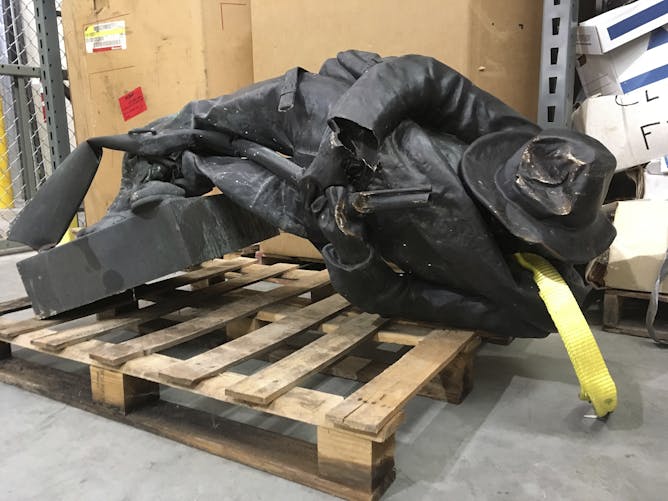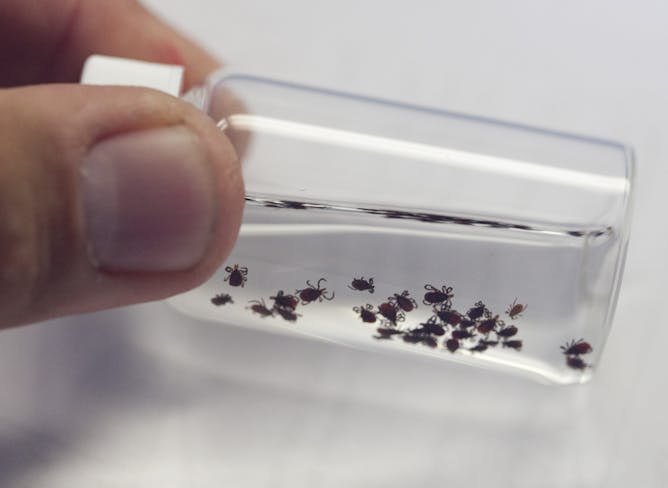
A damaged Confederate statue lies on a pallet in a warehouse in Durham, N.C. on Tuesday, Aug. 15, 2017, after protesters yanked it off its pedestal in front of a government building.
AP Photo/Allen Breed
Jordan Brasher, University of Tennessee; Derek H. Alderman, University of Tennessee
Where do old Confederate statues go when they die? The former Soviet bloc countries could teach the US something about dealing with monuments from a painful past.
|

Some pitchers are convinced the balls are being messed with behind the scenes.
Aspen Photo/Shutterstock.com
Brian J. Love, University of Michigan; Michael L. Burns, University of Michigan
Recent changes to the ball seem to be juicing hitters' stats. But could other factors, like the climate and advanced analytics, also be playing a role?
|

Ticks could spread weaponized bacteria – but B. burgdorferi that causes Lyme isn’t one of them.
Kelvin Ma/Tufts University
Sam Telford, Tufts University
Scientists know the bacterium that causes Lyme disease has been out in the wild since long before any biological weapons research could have focused on it. And that's just for starters.
|
|
-
Joseph Lanzafame, Rochester Institute of Technology
What exactly is inside those red fire extinguisher canisters, and does it work better than water?
-
Elizabeth Schmidt, University of Massachusetts Amherst
A new kind of capitalism is emerging in which companies value communities, the environment and workers just as much as profits.
-
Jennifer A. Jones, University of Florida
Could these extra hands do more for the nonprofits they assist?
|
|